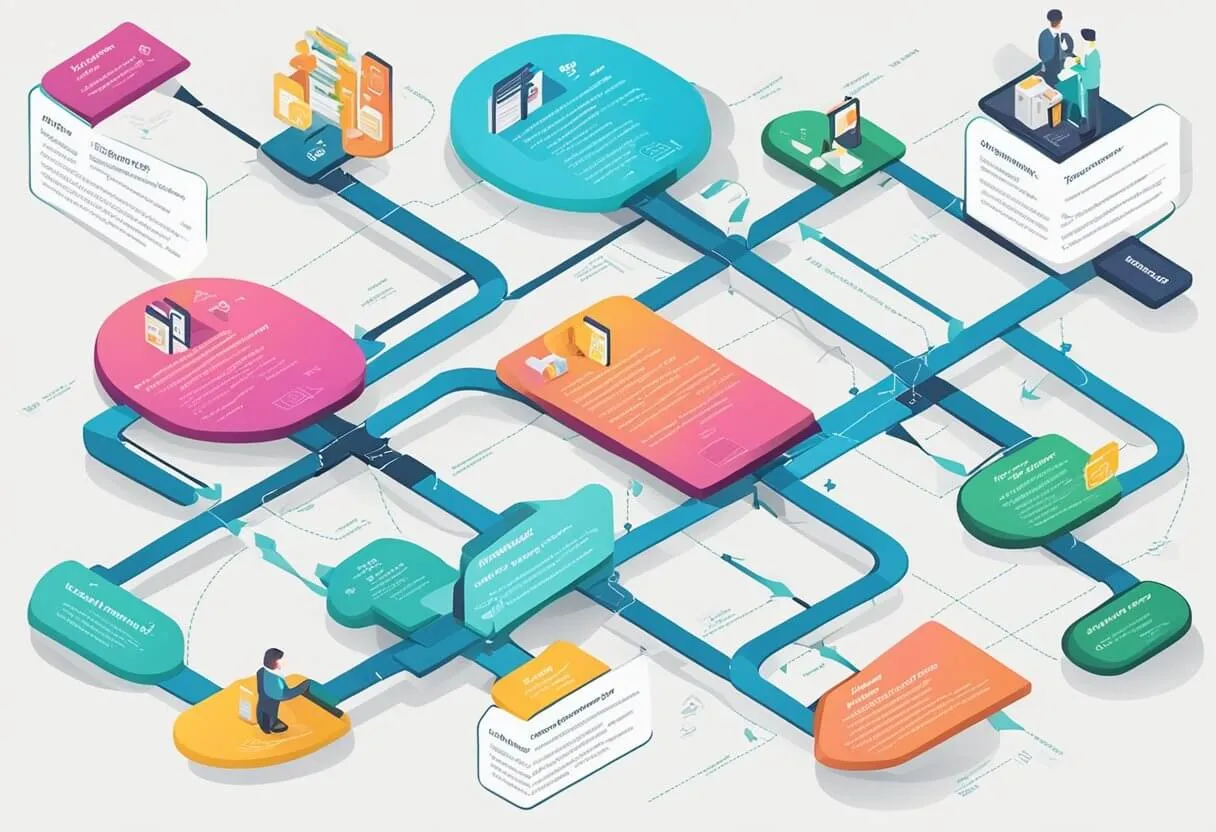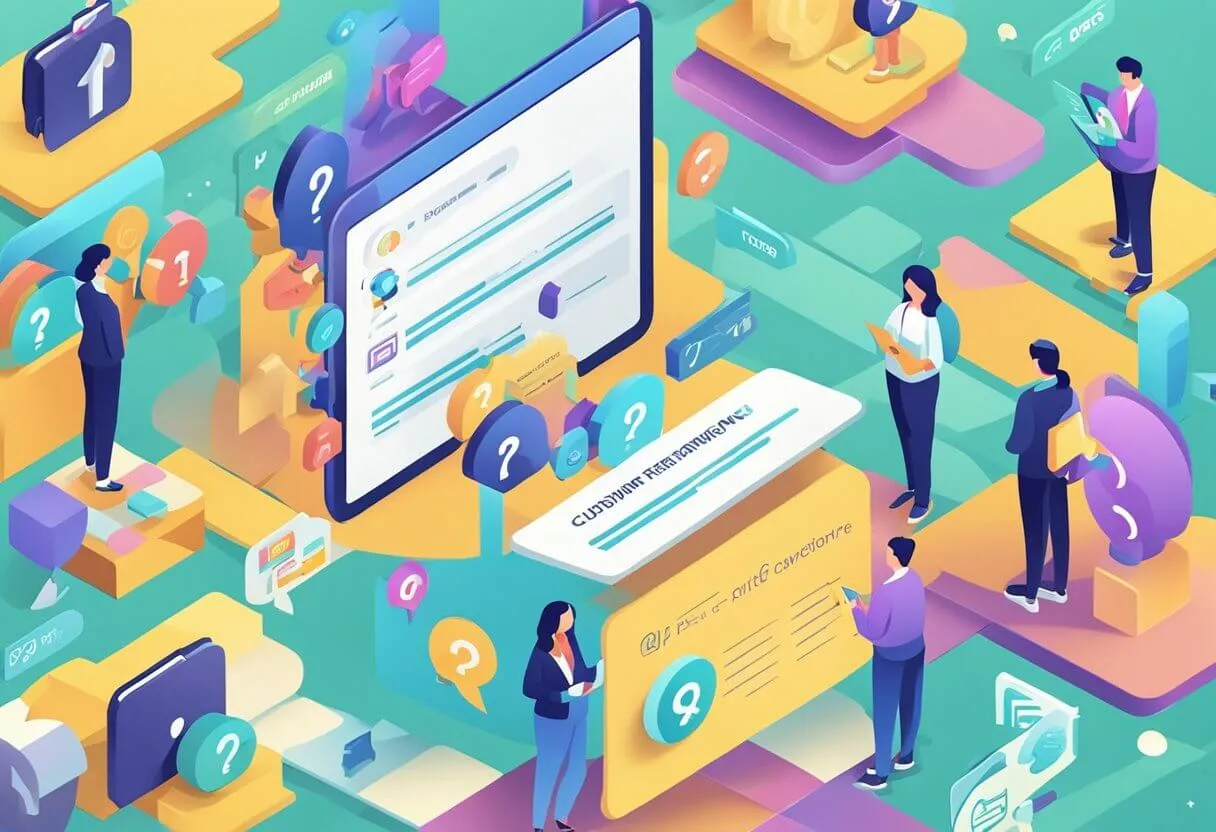Customer retention is a crucial aspect of any business that aims to build a strong customer base and maximize profits. Customer retention refers to the practice of keeping existing customers engaged with a company’s products or services to encourage them to continue doing business with the company. This customer retention techniques is in contrast to customer acquisition, which focuses on attracting new customers to a business.
Customer retention is important because it costs less to retain an existing customer than to acquire a new one. Additionally, loyal customers are more likely to recommend a product or service to others, which can lead to new business opportunities. To retain customers, businesses must focus on building and maintaining customer loyalty by providing high-quality products and services, effective marketing strategies, and exceptional customer service. By doing so, businesses can increase customer satisfaction and create long-term relationships with their customers.
Understanding Customer Retention

Definition and Importance
Customer retention is a business’s ability to keep existing customers and continue to generate revenue from them. It is a key metric that indicates the quality of a product or service and the degree of customer loyalty. Retaining customers is essential for any organization as it costs less to retain existing customers than to acquire new ones. According to IBM, increasing customer retention rates by 5% can increase profits by 25% and repeat customer rate up to 95%.
Customer retention is closely related to customer satisfaction and customer experience (CX). A satisfied customer is more likely to become a loyal customer and recommend the product or service to others. Therefore, it is essential to provide excellent customer service and support to ensure customer satisfaction.
Key Metrics
There are several key metrics that organizations can use to measure customer retention. One of the most important metrics is the retention rate, which to calculate your customer retention, is the percentage of existing customers that continue to do business with the organization. The retention rate can be calculated using the following formula:
Retention Rate = ((CE-CN)/CS)) X 100where CE is the number of customers at the end of a period, CN is the number of new customers acquired during that period, and CS is the number of current customers at the start of that period.
Another important metric is customer lifetime value (CLV), which is the total amount of revenue that a customer is expected to generate for the organization over their lifetime. CLV can help organizations identify their most valuable customers and develop strategies to retain them.
Churn rate is also a critical metric for measuring customer retention. Churn rate is the percentage of customers that stop doing business with the organization over a given period. A high churn rate indicates that the organization is losing customers at an alarming rate, which can negatively impact profits and growth.
In conclusion, customer retention is crucial for the success of any organization. By measuring key metrics such as retention rate, CLV, and churn rate, organizations can develop strategies to retain existing customers, increase profits, and improve customer satisfaction and experience.
Establishing Trust and Loyalty

Building trust and loyalty with customers is essential for any business that wants to thrive. Trust is the foundation of any successful relationship, and it can make or break your customer retention efforts. Establishing trust with your customers is the key to building a loyal customer base that will keep customers coming to back to your business.
Building Customer Loyalty
One of the most effective ways to build customer loyalty is through a loyalty program. A loyalty program is a rewards program that incentivizes customers to keep coming back to your business. These programs can take many forms, from points-based systems to VIP tiers, but the key is to offer customers something of value in exchange for their loyalty.
Another way to build customer loyalty is by creating a strong brand identity that resonates with your target audience. Your brand should be consistent across all channels, from your website to your social media accounts. By creating a strong brand identity, you can build trust with your customers and establish yourself as a credible and reliable business.
Maintaining Trust
Maintaining trust with your customers is just as important as building it in the first place. One of the best ways to maintain trust is by being transparent and honest in your business practices. This means being upfront about any potential issues or delays and communicating with your customers in a timely and respectful manner.
Another way to maintain trust is by creating a customer-centric culture within your business. This means putting your customers first and making sure that their needs are always met. By prioritizing customer satisfaction, you can build a loyal customer base that will keep coming back to your business.
Finally, building trust with your customers means creating brand ambassadors who will spread the same word of mouth about your business to others. These ambassadors can be loyal customers who are passionate about your brand and are willing to share their positive experiences with others. By creating brand ambassadors, you can build credibility and trust with potential customers who may be hesitant to try your business for the first time.
In conclusion, building trust and loyalty with customers is essential for any business that wants to succeed. By implementing customer loyalty programs well, creating a strong brand identity, being transparent and honest, prioritizing customer satisfaction, and creating brand ambassadors, you can establish a loyal customer base that will keep coming back to your business.
Improving Customer Experience

Customer experience is a critical factor in retaining customers. Companies that prioritize customer experience are more likely to retain customers in the long run. In this section, we will discuss two ways to improve customer experience: enhancing product and service quality and optimizing user experience.
Enhancing Product and Service Quality
Product and service quality are essential elements of customer experience. Customers expect high-quality products and services that meet their needs and exceed their expectations. Companies can enhance product and service quality by:
-
Conducting market research to understand customer needs and preferences
-
Investing in product development to create high-quality products that meet customer needs
-
Providing excellent customer service to address customer concerns and resolve issues quickly
-
Offering warranties and guarantees to assure customers of the quality of products and services
By enhancing product and service quality and customer expectations, companies can build trust and loyalty with customers, which can lead to increased retention rates.
Optimizing User Experience
User experience (UX) refers to the overall experience that customers have when interacting with a product or service. A positive UX can lead to increased customer satisfaction and retention rates. Companies can optimize UX by:
-
Conducting user research to understand customer needs and pain points
-
Improving the onboarding process to make it easier for customers to use products and services
-
Providing clear and concise instructions to help customers navigate products and services
-
Using heatmaps and other tools to identify areas of the product or service that need improvement
-
Engaging with customers to gather feedback and make improvements based on their suggestions
By optimizing UX, companies can create a positive customer experience that encourages loyalty and retention.
In conclusion, improving customer experience is an essential element of customer retention. By enhancing product and service quality and optimizing user experience, companies can create a positive customer experience that encourages loyalty and retention.
Effective Communication Strategies

Effective communication is one of the most important aspects of customer retention. It helps to build a strong relationship between the customer and the business. In this section, we will discuss some effective communication strategies that businesses can use to increase customer engagement and increase customer retention further.
Utilizing Social Media
Social media is a powerful tool for businesses to communicate with their customers. It is an excellent platform to engage with customers and build a relationship with them. Businesses can use social media to share updates, promotions, and other important information with their followers. They can also use social media to respond to customer queries and complaints.
To effectively utilize social media, businesses need to identify the right platforms for their target audience. They should also create a consistent brand voice and tone across all their social media channels. Additionally, they should actively monitor their social media accounts and respond to customer comments and messages promptly.
Email Marketing
Email marketing is another effective communication strategy that businesses can use to engage with their customers. It is a cost-effective way to reach a large audience and can be personalized to each customer’s interests and needs. Businesses can use email marketing to share updates, promotions, and other important information with their subscribers.
To make email marketing effective, businesses need to create engaging and personalized content. They should also segment their email list to send targeted messages to specific groups of customers. Additionally, they should use attention-grabbing subject lines and clear calls-to-action to encourage customers to take action.
Live Chat and Chatbots
Live chat and chatbots are becoming increasingly popular communication channels for businesses. They provide customers with instant support and assistance, which can improve customer satisfaction and retention. Live chat and chatbots can also help businesses to save time and resources by automating repetitive tasks.
To make live chat and chatbots effective, businesses need to ensure that they are available 24/7. They should also provide clear and concise responses to customer queries and complaints. Additionally, they should personalize their responses to each customer’s needs and preferences.
In conclusion, effective communication is crucial for customer retention. By utilizing social media, email marketing, live chat, and chatbots, businesses can engage with their customers and build a strong relationship with them.
Customer Feedback and Surveys

Importance of Feedback
In order to retain customers, businesses must be aware of their customers’ needs, preferences, and satisfaction levels. One of the best ways to collect customer feedback and gain this understanding is through customer feedback. Feedback can come in many forms, including customer support queries, social media comments, and surveys.
Asking for feedback shows customers that their opinions are valued and that the business is invested in improving their experience. By addressing customer concerns and making necessary changes, businesses can improve customer retention rates and increase customer loyalty.
Conducting Surveys
Surveys are a valuable tool for gathering customer feedback. When conducting surveys, it is important to keep the questions clear and concise, avoiding any confusion or ambiguity. Surveys should also be designed to gather specific information that can be used to improve the customer experience.
Businesses can use a variety of survey formats, including online surveys, phone surveys, and in-person surveys. It is important to choose a format that is convenient for customers and provides accurate data.
When designing surveys, it is important to consider the following:
-
The purpose of the survey
-
The target audience
-
The type of questions to be asked
-
The format of the survey
-
The method of data analysis
Overall, customer feedback and surveys are essential tools for improving customer retention rates. By listening to customers, gather customer feedback and making necessary changes, businesses can create a better customer experience and increase customer loyalty.
Customer Retention Strategies

Customer retention is a crucial aspect of any business. It is more cost-effective to retain existing customers than to acquire new ones. Therefore, developing and implementing customer retention strategies is essential for any business to succeed.
Developing a Retention Program
Developing a customer retention program is the first step towards retaining customers. A retention program involves a set of strategies and tactics designed to keep customers engaged and loyal to the brand. The customer loyalty program should be tailored to meet the specific needs of the business and its customers.
To develop an effective customer retention strategy and program, businesses need to understand their customers’ needs and preferences. This can be achieved by conducting surveys, analyzing customer feedback, and monitoring customer behavior. Once the business has a clear understanding of its customers, it can develop a retention program that addresses their needs and preferences.
Incentives and Discounts
Incentives and discounts are effective customer retention strategies. They encourage customers to continue doing business with the brand. Offering discounts and incentives can be a cost-effective way to retain customers.
Discount codes are an effective way to incentivize customers to make repeat purchases. Businesses can offer discount codes to repeat customers, who have made a certain number of purchases or who have been loyal to the brand for a certain period.
Incentives such as loyalty programs can also be effective in retaining customers. Loyalty programs reward customers for their continued business with the brand. These programs can include discounts, free products, and other incentives.
In conclusion, developing a customer retention program and offering incentives and discounts are effective customer retention strategies. By understanding their customers’ needs and preferences, businesses can develop the best customer retention techniques and programs that keep customers engaged and loyal to the brand. Offering incentives and discounts can be a cost-effective way to retain customers and encourage repeat business.
Case Studies

Case studies offer a valuable insight into how companies have successfully implemented customer retention strategies. One such example is Bombas, a sock company that donates a pair of socks to a homeless shelter for every pair purchased. This unique approach to customer retention has helped Bombas build a loyal customer base that is invested in the company’s social mission. By creating a sense of purpose and community around the brand, Bombas has been able to retain customers and grow its business.
Another example of successful customer retention is Dollar Shave Club, a subscription-based service that delivers razors and grooming products to customers on a regular basis. By offering a convenient and affordable solution to an everyday problem, Dollar Shave Club has been able to build a loyal customer base that values the company’s commitment to quality and customer service.
Case studies also demonstrate the importance of understanding the needs and preferences of customers. For example, a homeless shelter may have different requirements for socks than a regular customer. By tailoring their products and services to meet the specific needs of their customers, companies can build trust and loyalty.
In conclusion, case studies provide valuable insights into the strategies and tactics that have been successful in retaining customers. By understanding the unique needs and preferences of their customers, companies can build a loyal customer base that is invested in the brand’s mission and values.
Frequently Asked Questions

What are some effective customer retention strategies?
There are several effective customer retention strategies that businesses can implement to keep their customers satisfied. Some of these strategies include offering loyalty programs, providing excellent customer service, personalizing communication with customers, and regularly engaging with them through various channels.
What are the key factors that impact customer retention?
There are several key factors that impact customer retention, including the quality of the product or service, the level of customer service, the overall customer experience, and the price of the product or service. Other factors that can impact customer retention include the company’s reputation, the competition, and the customer’s personal circumstances.
How can businesses measure the success of their customer retention program?
Businesses can measure the success of their customer retention program by tracking key metrics such as customer retention rate, customer lifetime value, and customer satisfaction levels. They can also conduct surveys and gather feedback from customers to gain insights into how well their retention program is working.
What are some examples of successful customer retention programs?
Some examples of successful customer retention programs include Starbucks’ rewards program, Amazon’s Prime membership, and Sephora’s Beauty Insider program. These programs offer customers exclusive benefits and rewards for their loyalty, which can help to keep them coming back.
What are the different types of customer retention objectives?
There are several different types of customer retention objectives that businesses can set, including reducing churn rate, increasing customer lifetime value, improving customer satisfaction levels, and increasing the frequency of their repeat customer purchases. Businesses should choose objectives that align with their overall goals and values.
How can businesses improve customer retention rates?
Businesses can improve customer retention rates by implementing effective customer retention strategies, such as offering personalized communication, providing excellent customer service, and regularly engaging with customers through various channels. They can also gather feedback from customers and use that feedback to make improvements to their products and services.


